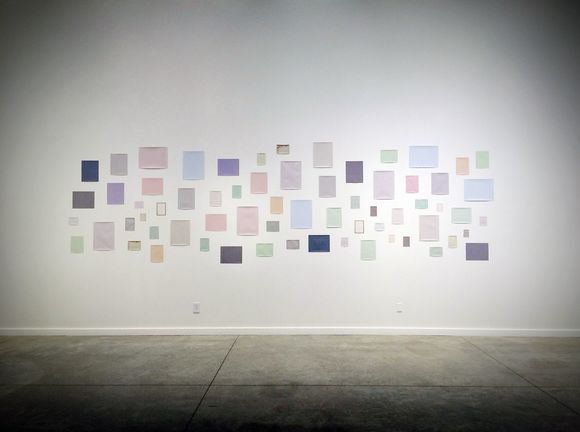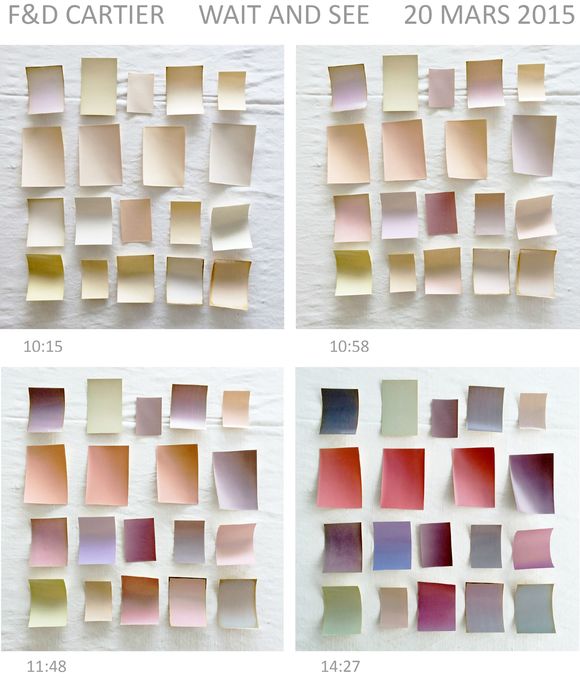|
|
Biennale für aktuelle Fotografie
Farewell Photography 09/09 – 05/11/2017
Newsletter #3 |
|
|
|---|
|
|
|
|
|
|
de
Eröffnung: 8/9/2017, 19 Uhr, Port25 - Raum für Gegenwartskunst
|
|
|
en
Opening: 9/8/2017, 7 pm, Port25 - Raum für Gegenwartskunst |
|
|
|---|
|
|
|
|
Erste Einblicke
In den kommenden Newslettern stellen wir die einzelnen Ausstellungen der Biennale 2017 vor. Dazu haben wir Fragen an teilnehmende Künstlerinnen und Künstler gestellt.
|
|
|
First Insights
In the upcoming newsletters we will present the individual exhibitions of the Biennale 2017 alongside a Q & A with the participating artists. |
|
|
|---|
|
|
|
|
F&D Cartier, Wait and See (Installation aus historischen Fotopapieren, unfixiert, Transformer Station, Cleveland, OH), 2016, variable Größe, Collection of Fred and Laura Ruth Bidwell © F&D Cartier / F&D Cartier, Wait and See (Installation of Vintage Photo Papers, unfixed, Transformer Station, Cleveland, OH), 2016, variable dimensions, Collection of Fred and Laura Ruth Bidwell © F&D Cartier
|
|
|
|---|
|
|
|
|
|
|
|
|
Das Künstlerpaar beschäftigt sich mit grundlegenden Elementen der analogen Fotografie: mit Licht und fotosensiblem Material. Für die Ausstellung 1x1 der Kamera fertigen sie eine ortsspezifische Installation aus unberührten historischen Fotopapieren an. Die Papiere stammen aus den Jahren 1890 bis 1980. Sie werden an den Museumswänden ausgerichtet und reagieren auf die Lichtsituation in den Ausstellungsräumen des Wilhelm-Hack-Museums: Die schwarz-weißen Blätter entwickeln sich nach und nach von bunten zu dunklen monochromen Flächen.
Eine Frage an Françoise und Daniel Cartier
F Eure erste Arbeit, die auf unberührte Fotopapiere zurückgreift, habt ihr 1998 angefertigt. Was hat euch damals dazu bewegt euch mit dem Material der Fotografie zu beschäftigen, anstatt neue Motive herzustellen? Bekommt eure Praxis angesichts der fortgeschrittenen Digitalisierung heute eine andere Bedeutung als sie Ende der 1990er Jahre hatte, als diese Debatte noch ganz am Anfang stand?
A Angesichts der neuen Technologie der Digitalfotografie und der Bilderflut während der 90er Jahre, begannen wir uns mit der Bedeutung von Bildern und den Entscheidungen auseinanderzusetzen, die hinter der Aufnahme von Bildern stehen. Im Bewusstsein, dass sich die Ära des Silbergelatinepapiers dem Ende neigt, entschieden wir uns es als einfaches Mittel für die Aufzeichnung von Zeit und Licht zu verwenden, um so das Potenzial hinter der Leerstelle des nie aufgenommenen oder nie abgezogenen Bildes zu hinterfragen. Wir erwecken diese Bilder zum Leben, fixieren sie nicht, sondern beobachten ihre stetige Veränderung. Langsamkeit. Wait and See.
Eine Perspektive, die in der Fotografieszene erst seit wenigen Jahren größere Aufmerksamkeit zu erfahren scheint.
|
|
|
The artist couple focuses on the essential elements of analogue photography: light and photosensitive material. For the exhibition How Your Camera Works they produce an site specific installation consisting of untouched vintage photographic paper. The paper originates from 1890 to 1980. It is displayed on the walls of the Wilhelm-Hack-Museum and reacts to the light environment of the exhibition space: the black-and-white sheets gradually develop from multicoloured to dark monochrome surfaces.
One question to Françoise and Daniel Cartier
Q Your first work, which makes use of untouched photographic papers, was produced in 1998. Why did you decide to focus on the materiality of photography, rather than taking new photographs? Considering the omnipresence of digital image-production today, do you feel the meaning of your practice changed since the 1990s, when the debate around the change from analogue to digital first appeared?
A Confronted with the emergence of digital photographic technologies and the overflow of images during the 1990s, we began to question the meaning of images and the motivations that lead to their production. Conscious that the era of silver gelatin photographic paper was coming to an end, we decided to use it as a simple means to capture time and light in order to question the potential of the void left by the unrecorded or undeveloped image. We bring these images to life, observing their ever-changing evolution without fixing them. Slowness. Wait and See.
A position that seems to have gained increasing attention from the photography community only in recent years. |
|
|
|---|
|
|
|
|
F&D Cartier, Wait and See (Belichtungsproben im Atelier), 20. März 2015 © F&D Cartier / F&D Cartier, Wait and See (studio tests), March 20th, 2015 © F&D Cartier
|
|
|
|---|
|
|
|
|
|
|
Wait and See ist Teil der Ausstellung
1 × 1 der Kamera
Was verspricht und was verfehlt das Material?
Wilhelm-Hack-Museum I |
|
|
Wait and See is part of the exhibition
How Your Camera Works
What does the material promise, what does it miss?
Wilhelm-Hack-Museum I |
|
|
|---|
|
|
|
|
|
|
| Mit der Digitalisierung haben sich die chemische Basis der Fotografie sowie die traditionellen Produktionsbedingungen von Bildern verändert. Die von Kathrin Schönegg kuratierte Ausstellung, 1 x 1 der Kamera, beleuchtet diesen Wandel des Materials und dessen Aussagekraft auf das Medium Fotografie. Dafür wird der Blick durch den Sucher umgekehrt. Im Zentrum stehen das Innere der Kamera und die Logik der Fotografie selbst. |
|
|
| Digitisation has changed both the chemical basis of photography and the traditional production conditions of images. The exhibition How Your Camera Works, curated by Kathrin Schönegg, highlights this transition and its significance for the medium of photography. The gaze through the viewfinder is reversed. At the centre of this exhibition lies the inside of the camera and the logic of photography itself. |
|
|
|---|
|
|
|
|
|
|
Teilnehmende 1x1 der Kamera / Participants How Your Camera Works
Cuthbert Bede, Kilian Breier, F & D Cartier, Sara Cwynar, Joseph Maria Eder, Philipp Goldbach, Vesko Gösel, Jochen Lempert, Peter Miller, Floris M. Neusüss, Adrian Sauer, Gaston Tissandier, Louis Vignes / Charles Nègre, Hermann Vogel, Max Wolf
|
|
|
|---|
|
|
|
|
Wilhelm-Hack-Museum
Berliner Straße 23
D-67059 Ludwigshafen am Rhein
Öffnungszeiten
Di / Mi / Fr 11-18 Uhr
Do 11-20 Uhr
Sa / So 10-18 Uhr
|
|
|
Tel: (0)621 504 3045 / 3411
Mail: hackmuseum@ludwigshafen.de
Opening Hours
Tue / Wed / Fri 11 am - 6 pm
Thur 11 am - 8 pm
Sat / Sun 10 am - 6 pm
|
|
|
|---|
|
|
|
|
|
|
|
|
|
|
"Als wir es sahen, wussten wir, das Bild war befreit worden. Es war nicht länger an die alten Regeln gebunden. Der Wandel hatte schon vor Jahren begonnen, kurz nachdem Stewart Brand verkündete: „Information wants to be free“ – Information will frei sein."
In: Das Neue Bild von David Levi Strauss |
|
|
"When we saw it, we knew that the image had been set free. It was no longer bound by the old rules. The change began years ago, soon after Stewart Brand proclaimed that information wants to be free."
In: The New Image by David Levi Strauss |
|
|
|---|
|
|
|
|
|









